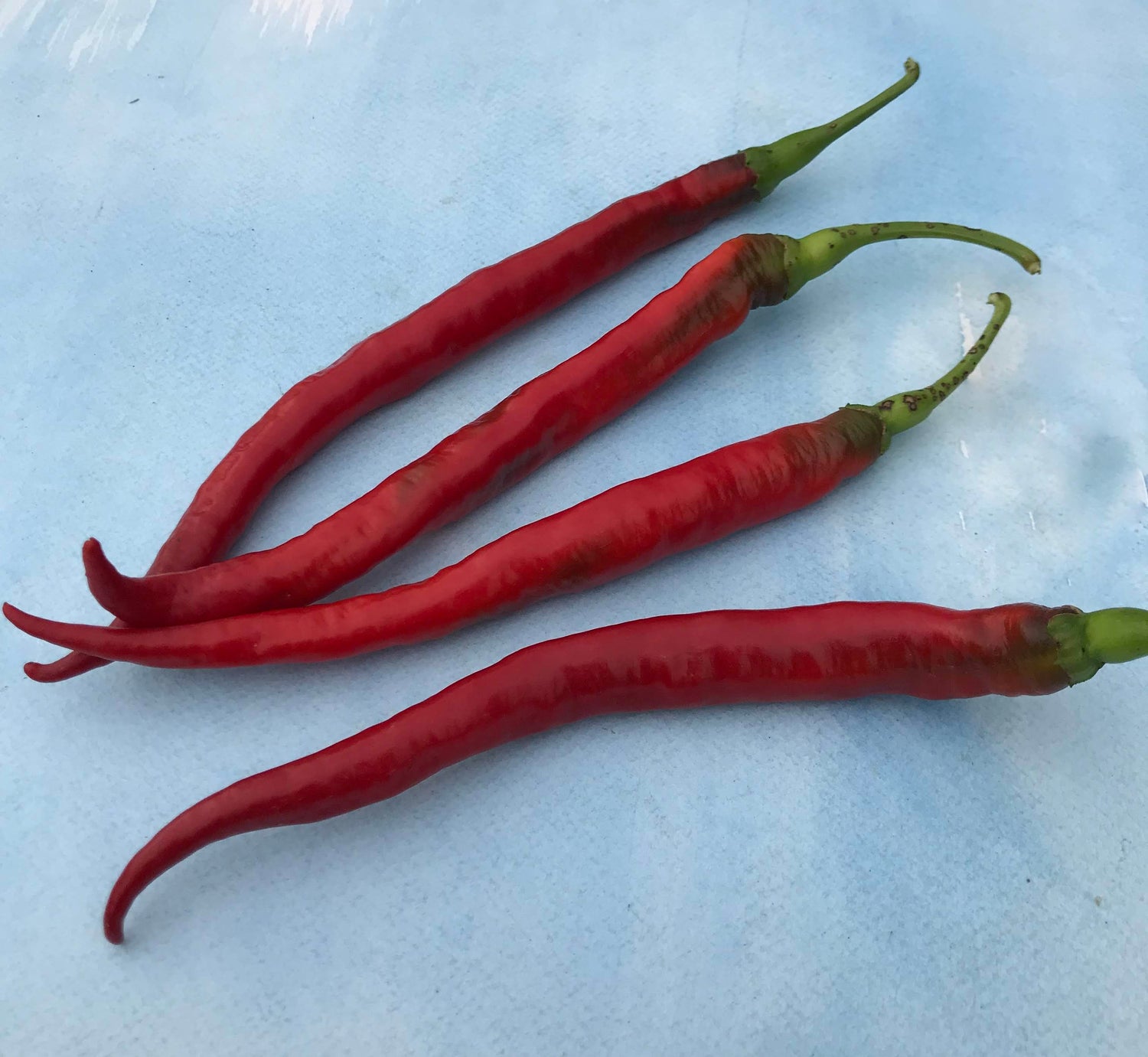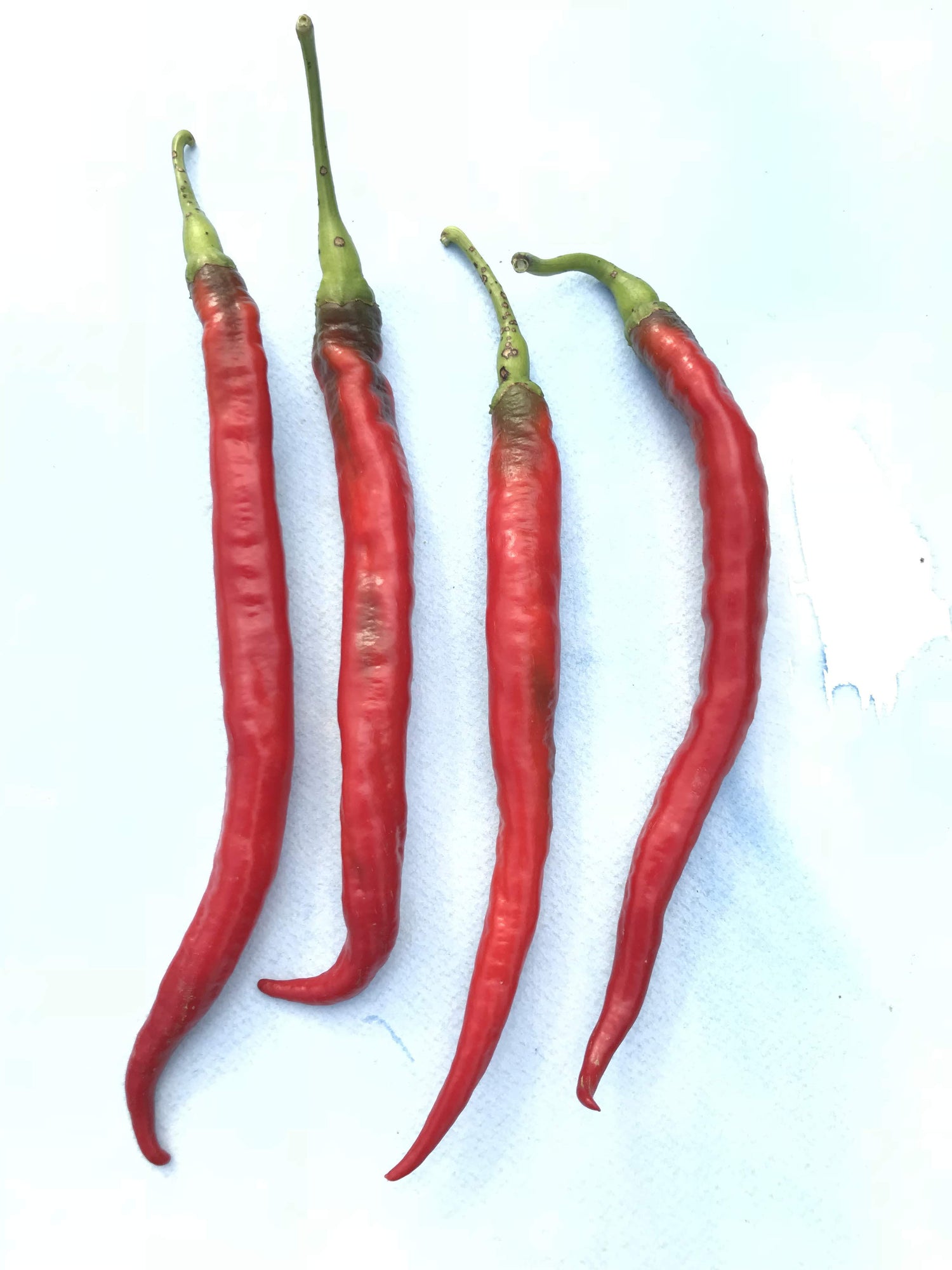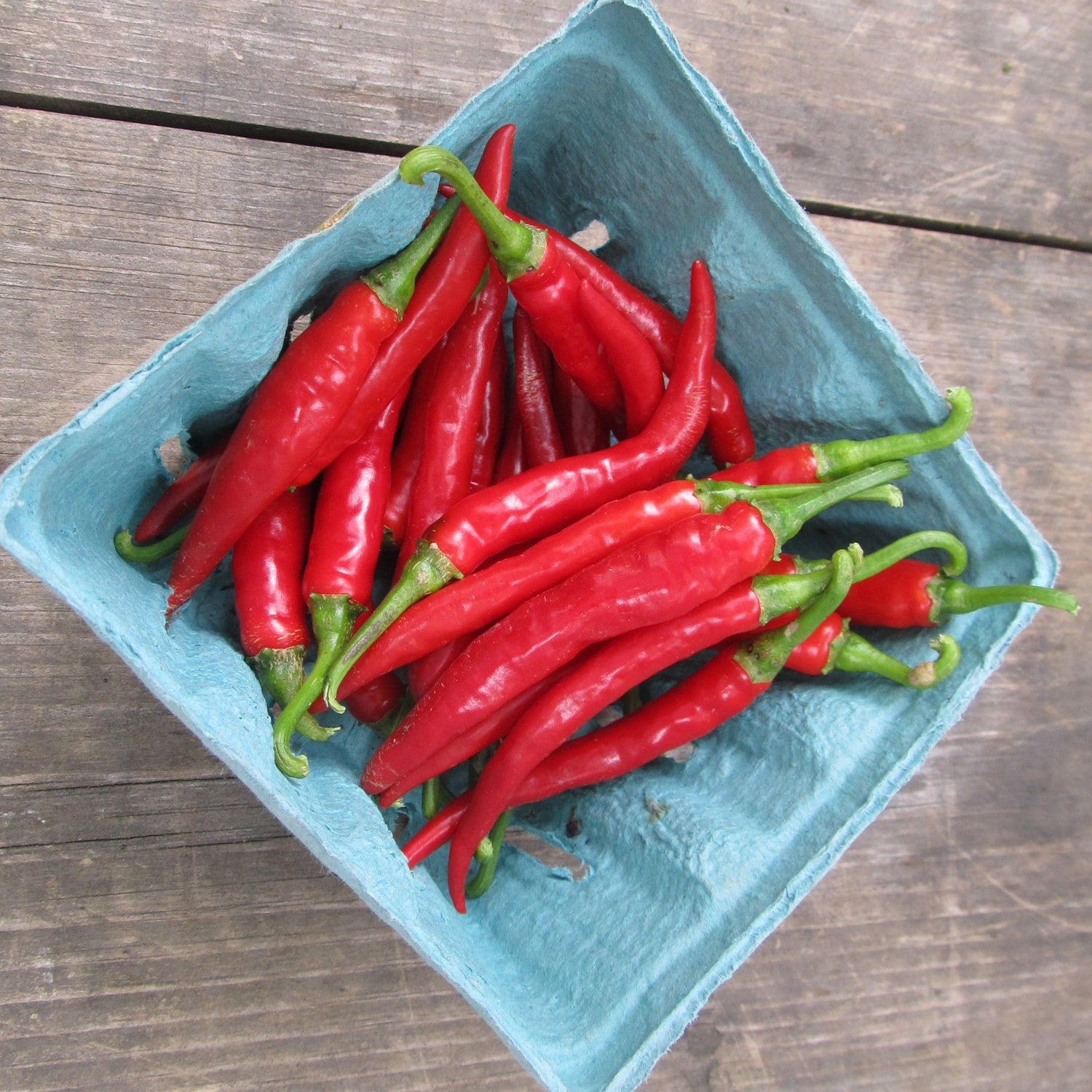1
/
of
3
Hudson Valley Seed Co.
Joe's Long Cayenne Pepper
Capsicum annuum
Certified Organic
Thin-skinned variety is excellent for drying.
This cayenne is long and thin which makes it perfect for drying. We wait to harvest until the peppers are fully flaming red. Then, Doug uses a needle and thread to string them in lines or bunches. We hang them in the kitchen and throw them into our lentil soup, frittatas made with eggs from our chickens, and other dishes for a little kick.
Seed Saving Tip: Wear rubber gloves when slicing and scraping the seeds from these peppers. Also, if processing in batches, we recommend a mask to avoid inhaling fumes. For real.
Because of the cool, wet summer, we had to pick many of our peppers green. We hung these cayenne above our wood stove. They turned red and are now crispy. Just right for grinding them up and using them as spice.
Couldn't load pickup availability
Growing instructions
Pepper seed requires heat to germinate; it just won't do much in cool soil. So the first trick is to find a spot that is steadily warm; usinag a heat mat is ideal, but above the fridge may work, as might a spot near the woodstove. Sow pepper seeds at least 6-8 weeks before your last frost date; they mature later in the season than tomatoes, and to get a good crop of ripe peppers requires an early start. (If you prefer green peppers, you've got more flexibility.)
Sow peppers about a quarter-inch deep in soil blocks or plug trays. Give them a good ten to fourteen days to germinate before thinking of giving up on them. Once up, peppers grow quite slowly when young and, again, require warmth to grow quickly.
Peppers should not be transplanted until the weather is settled, usually about two weeks after tomatoes go in. Space them about 18" apart. Row cover provides a warm microclimate for quicker growth. Although most pepper plants stay much smaller than tomato vines, their stems are weak and, when loaded with fruit, they tend to blow over in late summer storms. They can easily be staked to prevent this.
Product Details
| Days to Maturity | 75 days from transplant |
|---|---|
| Days to Germination | 7 to 14 days |
| Height at Maturity | 24 inches |
| Sun Conditions | Full Sun (8+ Hours Sun) |
| Planting Depth | _ inch |
| Row Spacing | 36 inches |
| Plant Spacing | 18 inches |
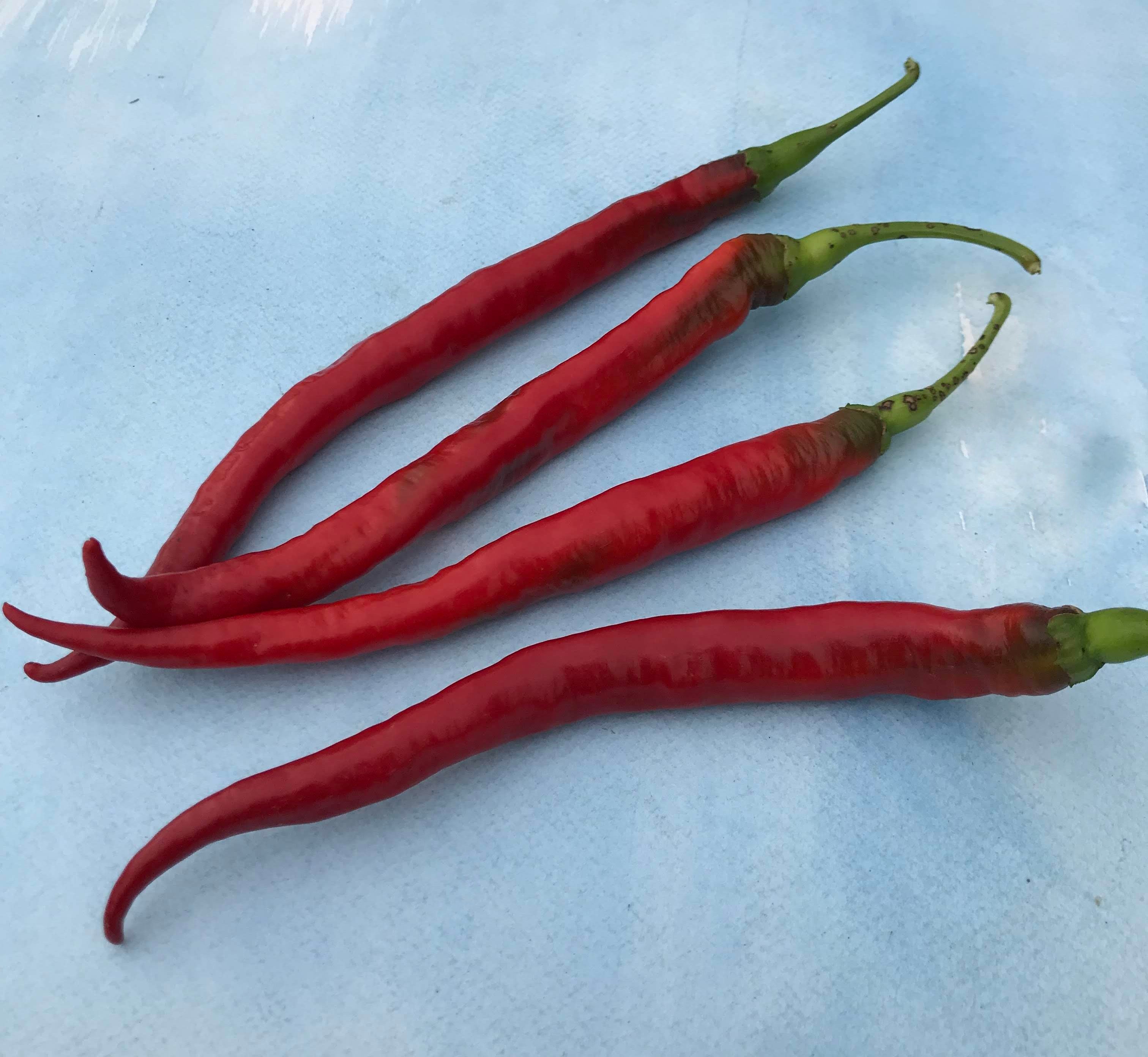

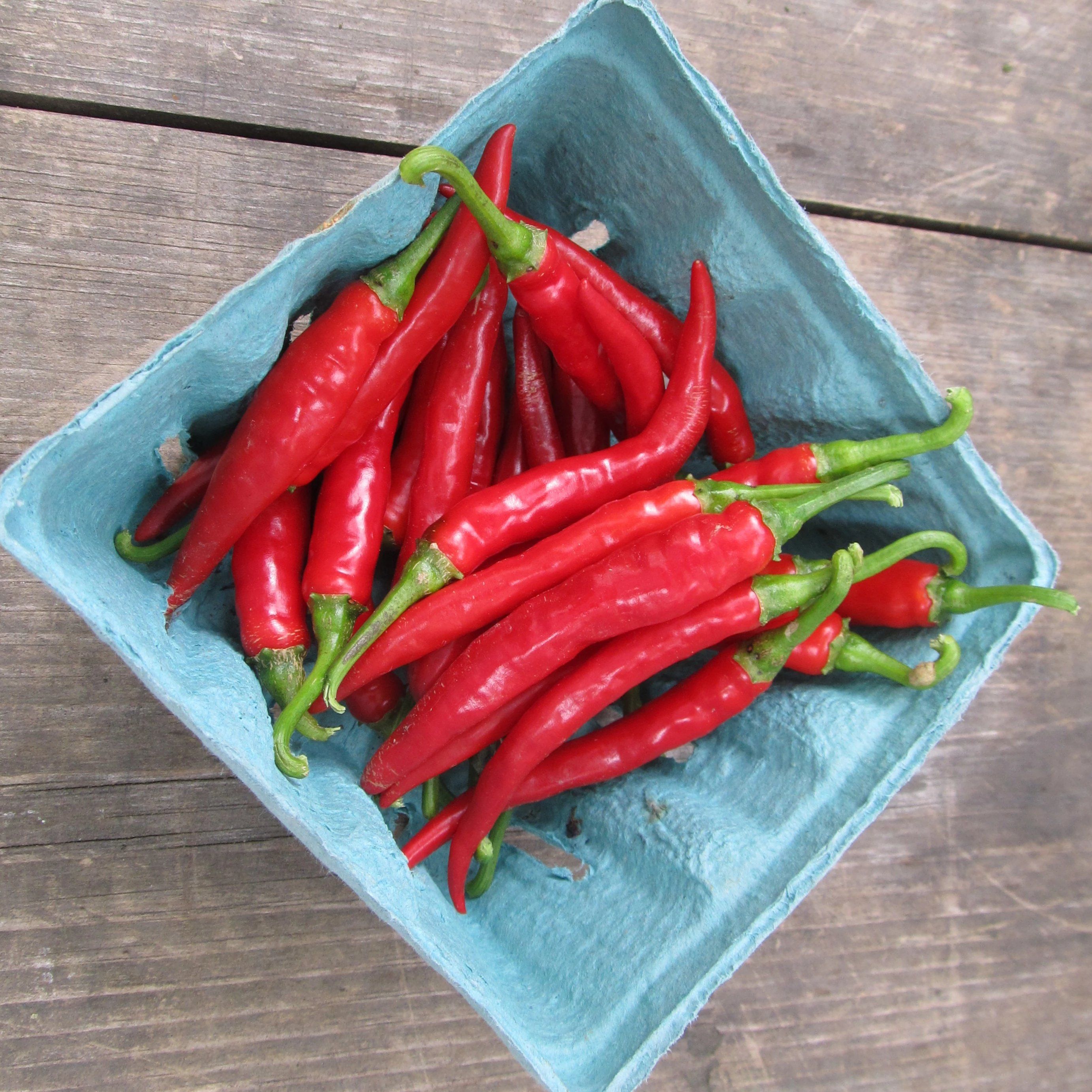

Joe's Long Cayenne Pepper
- Regular price
-
$4.29 - Regular price
-
- Sale price
-
$4.29


